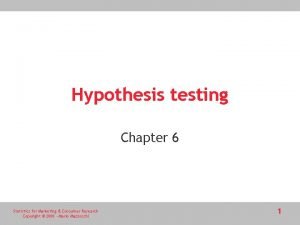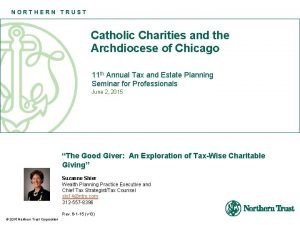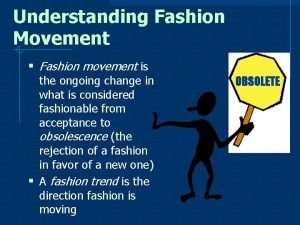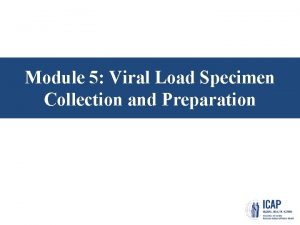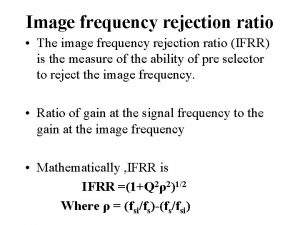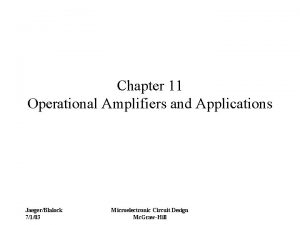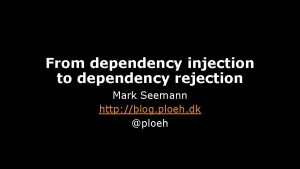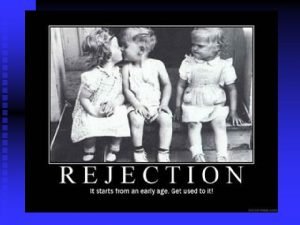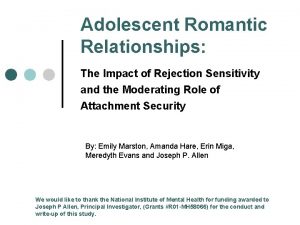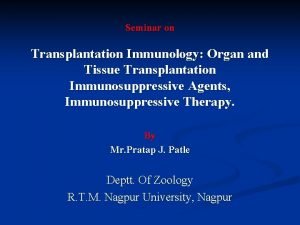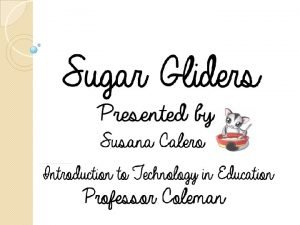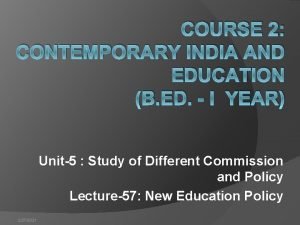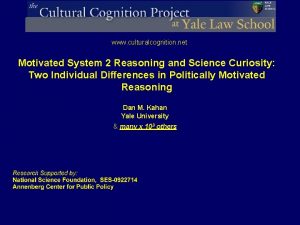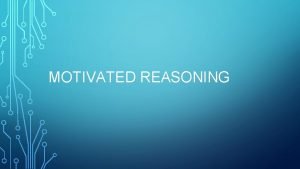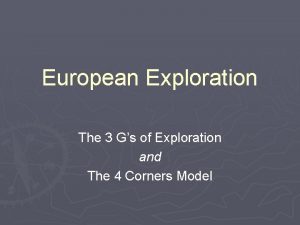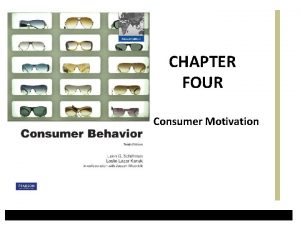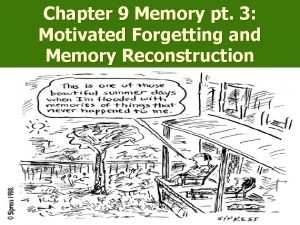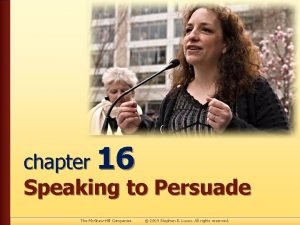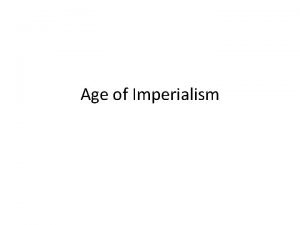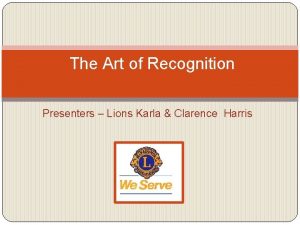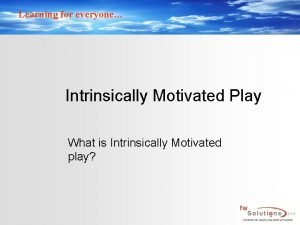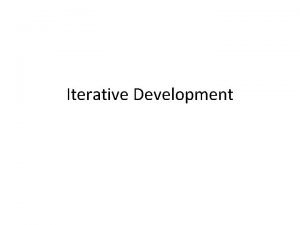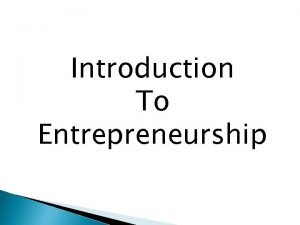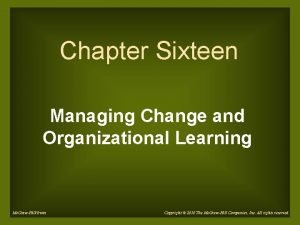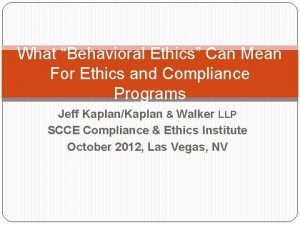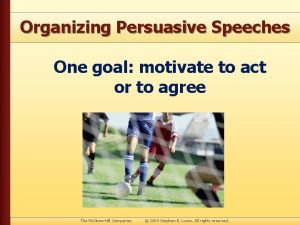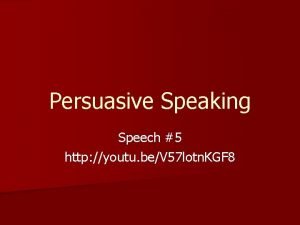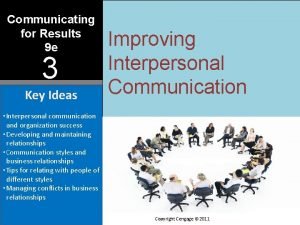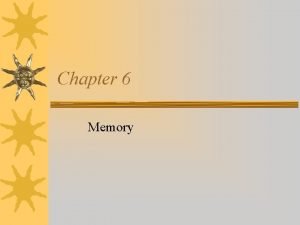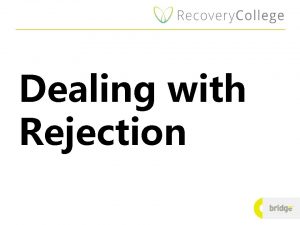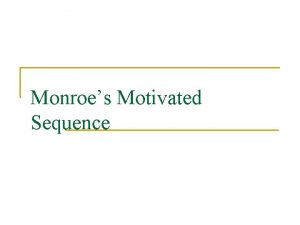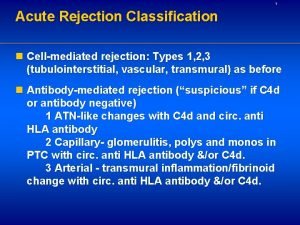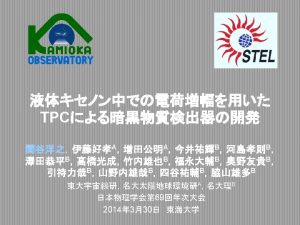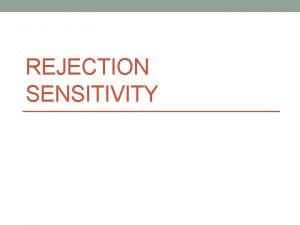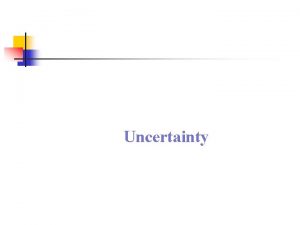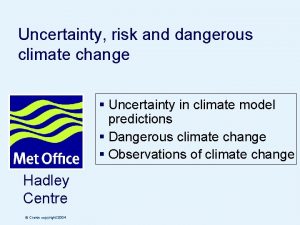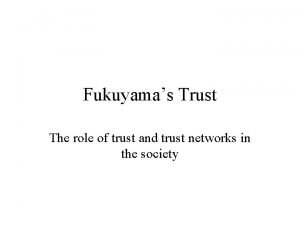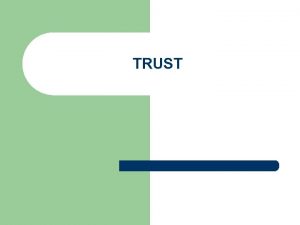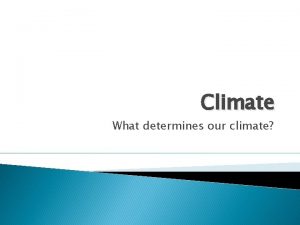Uncertainty Trust and The Motivated Rejection of Climate






















































- Slides: 54

Uncertainty, Trust, and The Motivated Rejection of Climate Science Dr. Sander van der Linden Dutch Statistical Society Department of Psychology, University of Cambridge Winton Centre for Risk and Evidence Communication @Sander_vd. Linden

Outline of Talk • A short history of climate science denial • Inoculating against misinformation • Communicating uncertainty in a post-truth world

Part I: Manufacturing doubt about the science Let’s agree to disagree

The Scientific Consensus on Climate Change

The scientific consensus on human-caused climate change

Who counts as an “expert”?

The Luntz Memo: Attack the scientific consensus

Uncertainty as a vehicle for the politicization of science

Concerted Disinformation Campaigns

Concerted Disinformation Campaigns

Misperceptions of the scientific consensus

Public Perception of the Scientific Consensus

Post-truth: misperceiving the scientific norm

Normative Belief Change Processes Informational Influence Central Tendency Dispersion Describes the average group behavior Describes the variance Try to shift norm to new location Weakens influence of existing norm

Gateway Belief Model (GBM) – van der Linden et al. (2015, 2017)

Gateway Belief Model (GBM) – van der Linden et al. (2015, 2017)

The Conspiracy-Effect (van der Linden, 2015) • Online experiment (N = 316) • Conspiracy-theory condition • (“The Great Global Warming Swindle”). • Climate “inspirational” video (UN). • Control group (neutral word puzzle). • Outcome measures: • Public perception of the scientific consensus. • Sign a real online “stop global warming” petition. • Pro-social intentions to donate or volunteer for a charity in the next six months.

Perceptions of scientific consensus (0% to 100%) 72% 70% F(2, 309) = 5. 77, p < 0. 01 61% van der Linden, S. (2015). The Conspiracy-Effect: Exposure to Conspiracy Theories (about Global Warming) Decreases Pro-Social Behavior and Science Acceptance. Personality and Individual Differences, 87, 171 -173.

% Signed “Stop” Global Warming Petition 43% 34% 23%*** van der Linden, S. (2015). The Conspiracy-Effect: Exposure to Conspiracy Theories (about Global Warming) Decreases Pro-Social Behavior and Science Acceptance. Personality and Individual Differences, 87, 171 -173.

“When facts fail”

If the human brain was Bayesian (all of the time). .

Selective Attention, Confirmation Bias, and Motivated Reasoning Attitude polarization Selective Attention Confirmation Bias Motivated Reasoning Directionally motivated reasoning Motivated numeracy

Motivated Cognition on Steroids: The Motivated Numeracy Hypothesis

Does exposure to evidence lead to belief polarization?

Does exposure to evidence lead to belief polarization? National US Survey Experiment (N = 6, 301) Pre-test (Prior Judgments) Treatment (N = 3, 150) Control (N = 3, 151) Distractions Posterior Judgment

Does exposure to evidence lead to belief polarization?

The Consensus-Heuristic

The Wisdom of (Expert) Crowds (Galton, 1907) • “When independently formed judgements are aggregated, the average estimate of a (large) group is as good, and often more accurate, than individual judgements”. • People intuitively prefer to rely on the combined judgment of multiple experts (Mannes, Soll, & Larrick, 2014).

Non-identity threatening meta-cognition (van der Linden et al. , 2017)

Part II: Inoculating against misinformation

Inoculating against misinformation

A psychological vaccine against fake news

The psychology of persuasion (Yale School) William Mc. Guire


“Continued Influence Effect”

Shift in Perception + + The process of psychological “inoculation”

We showed participants. .

Shift in Perception + + The process of psychological “inoculation”

We showed participants…

Shift in Perception + + The process of psychological “inoculation”


The process of psychological “inoculation” Triggers production of mental “antibodies” Psychological The vaccine Inoculation Through internal rehearsal A) Affective basis: “Warning of impending threat” B) Cognitive basis: “Refutational preemption” Increased resistance to future exposure and persuasion attempts

A psychological vaccine against fake news ‘Partial Vaccine’ ‘Full Vaccine’

Shift in Perception + + The process of psychological “inoculation”

Part III: Communicating Uncertainty



Uncertainty Study Design • Participants were recruited on Prolific Academic, a platform for online research. In total, 1126 people participated in this study, of which 68. 4% were female. The average of the people in our sample was 37. 65 years (SD = 12. 19). • Participants were randomly allocated to one of 9 conditions (about 125 participants per condition), in which they read a short text about one of the three topics (tigers, climate science, or unemployment) that included either an estimate, an estimate with a numerical range, or an estimate with a verbal uncertainty expression. • Recently, an official report came out with new information about global warming. This report stated that between 1880 and 2012, the earth’s average global surface temperature has increased by an estimated 0. 85°C [minimum 0. 65 to maximum 1. 06] [this number could be somewhat higher or lower]

Does uncertainty increase or decrease trust in numbers? Outcome variable How uncertain To what extent do does this you think this number make number is you feel? reliable? To what extent do you think that this number is certain or uncertain? How much uncertainty do you think there is about this number? Estimate - Mean (SD) 3. 44 (1. 27) 4. 84 (2. 10) 4. 80 (2. 27) 4. 50 (1. 33) 4. 53 (1. 36) 4. 55 (1. 26) Number - Mean (SD) 3. 95 (1. 22) 5. 62 (1. 80) 5. 13 (2. 14) 4. 29 (1. 29) 4. 33 (1. 31) 4. 59 (1. 21) Verbal - Mean (SD) 4. 82 (1. 21) 6. 79 (1. 82) 6. 22 (2. 18) 3. 48 (1. 45) 3. 54 (1. 44) 4. 19 (1. 32) p <. 001 0. 51 [0. 33; 0. 69] 0. 78 [0. 50; 1. 05] 0. 33 [0. 01; 0. 64] -0. 22 [-0. 41; -0. 02] -0. 20 [-0. 39; 0. 00] 0. 04 [-0. 15; 0. 22] 0. 41 0. 40 0. 15 0. 16 0. 15 0. 03 1. 38 [1. 21; 1. 56] 1. 96 [1. 68; 2. 23] 1. 41 [1. 10; 1. 72] -1. 02 [-1. 22; -0. 83] -0. 99 [-1. 19; -0. 80] -0. 36 [-0. 54; -0. 18] 1. 11 0. 99 0. 64 0. 73 0. 71 0. 28 0. 87 [0. 70; 1. 05] 1. 18 [0. 91; 1. 45] 1. 09 [0. 77; 1. 40] -0. 80 [-1. 00; -0. 61] -0. 80 [-0. 99; -0. 60] -0. 40 [-0. 58; -0. 21] 0. 72 0. 65 0. 50 0. 59 0. 57 0. 32 Type of uncertainty P-values of ANOVA F-test Number – Estimate Mean difference [95% CI] Cohen’s D Verbal – Number Mean difference [95% CI] Cohen’s D To what extent do you think this number is trustworthy? To what extent do you think the writers of this report are trustworthy?

Does uncertainty increase or decrease trust in numbers?

Does uncertainty increase or decrease trust in numbers?

Gaining trust as well as respect in communicating to motivated audiences about science topics (Dupree & Fiske, 2014)

Conclusion • Public perception of expert consensus is a key factor in judgment and opinion formation about contested issues, such as global warming. • Consensus perceptions are a sensitive psychological construct easily distorted by the presence of sticky misinformation. • Highlighting weight of evidence can help elicit accuracy-motivation and reduce belief polarization and motivated cognition. • It is possible to create cognitive resistance against misinformation through the process of inoculation. • There is a great need to explain and communicate scientific uncertainty without undermining public trust and confidence in the scientific process.

Conclusion Thank you
 Climate change 2014 mitigation of climate change
Climate change 2014 mitigation of climate change Acceptance and rejection region
Acceptance and rejection region Northern trust charitable trust
Northern trust charitable trust Fashion movement definition
Fashion movement definition Near zone length ultrasound
Near zone length ultrasound Sample rejection criteria
Sample rejection criteria Sample rejection criteria
Sample rejection criteria Elisha goodman financial breakthrough prayer points
Elisha goodman financial breakthrough prayer points Sample rejection criteria
Sample rejection criteria Teknik clarification dalam konseling
Teknik clarification dalam konseling Image frequency rejection ratio
Image frequency rejection ratio Cooling tower capacity
Cooling tower capacity Staffing and training needs in test plan
Staffing and training needs in test plan Cmrr op amp
Cmrr op amp Dependency rejection
Dependency rejection Rejection revenge
Rejection revenge Insulation coordination in high voltage engineering
Insulation coordination in high voltage engineering Rejection attachment
Rejection attachment Chronic rejection
Chronic rejection Chronic rejection
Chronic rejection Rejection sensitive dysphoria
Rejection sensitive dysphoria Chronic rejection
Chronic rejection Chronic rejection
Chronic rejection Chronic rejection
Chronic rejection Pregnant sugar glider pouch
Pregnant sugar glider pouch Chronic rejection
Chronic rejection Luke 4 rejection at nazareth
Luke 4 rejection at nazareth Motivated energized and capable faculty
Motivated energized and capable faculty Motivated system 2 reasoning
Motivated system 2 reasoning Employees who are strongly power-motivated are driven
Employees who are strongly power-motivated are driven Knowdell motivated skills card sort
Knowdell motivated skills card sort Motivated reasoning
Motivated reasoning 3 gs of exploration
3 gs of exploration Motivation process
Motivation process Define motivated forgetting
Define motivated forgetting Monroe's motivated sequence
Monroe's motivated sequence When are capabilities-motivated acquisitions essential?
When are capabilities-motivated acquisitions essential? After 1880 european nations sought
After 1880 european nations sought Lions are motivated by recognition
Lions are motivated by recognition Monroe's motivated sequence
Monroe's motivated sequence Motivated learning for everyone
Motivated learning for everyone Motivated last thing you want do
Motivated last thing you want do Myth 3: entrepreneurs are motivated primarily by money
Myth 3: entrepreneurs are motivated primarily by money Define motivated forgetting
Define motivated forgetting When abigail threatens betty, abigail is motivated by her
When abigail threatens betty, abigail is motivated by her Which of the following forces motivated change at h&b
Which of the following forces motivated change at h&b Basic model of motivation
Basic model of motivation Actions and their consequences examples
Actions and their consequences examples Attention need satisfaction visualization action
Attention need satisfaction visualization action What is a good research question?
What is a good research question? Which communicator is motivated by mistrust of others?
Which communicator is motivated by mistrust of others? Motivated forgetting that occurs unconsciously is known as:
Motivated forgetting that occurs unconsciously is known as: Hát kết hợp bộ gõ cơ thể
Hát kết hợp bộ gõ cơ thể Frameset trong html5
Frameset trong html5 Bổ thể
Bổ thể

